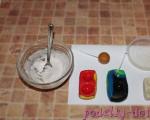A universal blood group that suits everyone. Universal donor: blood type and Rh factor
A blood group is an immuno-genetic blood trait that allows you to combine the blood of people according to the similarity of the antigens that are in the blood of each person (an antigen is a substance alien to the body that causes a protective reaction of the body in the form of the formation of antibodies). The presence or absence of an antigen, and possible combinations they are created by thousands of variants of antigenic structures inherent in humans. Antigens are combined into groups that have received the names of systems AB0, Rhesus and many others.
Blood groups of the AB0 system
It was found that when mixing the erythrocytes of some individuals with the blood serum of other individuals, sometimes an agglutination reaction occurs (clotting of blood with the formation of flakes), and sometimes not. Blood coagulates when certain antigens of one blood type (called agglutinogens) found in red blood cells combine with antibodies. 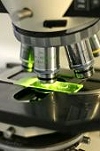 another group (they were called agglutinins) located in the plasma - the liquid part of the blood. In total, four blood groups were identified on this basis.
another group (they were called agglutinins) located in the plasma - the liquid part of the blood. In total, four blood groups were identified on this basis.
The division of blood according to the AB0 system into four groups is based on the fact that the blood may or may not contain antigens (agglutinogens) A and B, as well as antibodies (agglutinins) α (alpha or anti-A) and β (beta or anti-B) .
From universal donor to universal recipient
- I blood group - does not contain agglutinogens (antigens), but contains agglutinins (antibodies) α and β. It is denoted 0 (I). Since this group does not contain foreign particles (antigens), it can be transfused to all people. A person with this blood type is a universal donor.
- Group II contains agglutinogen (antigen) A and agglutinin β (antibodies to agglutinogen B), it is designated A β (II). It can be transfused only to those groups that do not contain antigen B - these are groups I and II.
- Group III contains agglutinogen (antigen) B and agglutinin α (antibodies to agglutinogen A) - referred to as Bα (III). This group can be transfused only to those groups that do not contain antigen A - these are groups I and III.
- The IV blood group contains agglutinogens (antigens) A and B, but does not contain agglutinins (antibodies) - AB0 (IV), it can be transfused only to those who have the same fourth blood group. But, since there are no antibodies in the blood of such people that can stick together with antigens introduced from the outside, they can be transfused with blood of any group. People with the fourth blood group are universal recipients.
Compatibility
The belonging of blood to a particular group and the presence of certain antibodies in it indicates the compatibility (or incompatibility) of the blood of individuals. Incompatibility can occur, for example, when fetal blood enters the mother's body during pregnancy (if the mother has antibodies to fetal blood antigens) or when another blood group is transfused.
When antigens and antibodies of the AB0 system interact, erythrocytes stick together (agglutination or hemolysis), and erythrocyte clusters are formed that cannot pass through small vessels and capillaries and clog them (clots form). Clogged kidneys, acute renal failure occurs  - a very serious condition, which, if not accepted emergency measures leads to the death of a person.
- a very serious condition, which, if not accepted emergency measures leads to the death of a person.
Hemolytic disease of the newborn
Hemolytic disease of the newborn can occur when the blood of the mother and fetus is incompatible according to the AB0 system. In this case, antigens from the child's blood enter the mother's blood and cause the formation of antibodies in her body. The latter enter the blood of the fetus through the placenta, where they destroy the corresponding antigen-containing erythrocytes - the blood coagulates, causing a number of disorders in the child's body.
Hemolytic disease of the newborn manifests itself in three forms: edematous, icteric and anemic.
The most severe form is edematous; children with it are often born prematurely, dead, or die in the first minutes after birth. characteristic feature this form is edema  subcutaneous tissue, free fluid in the cavities (pleural, abdominal, and so on), bruising.
subcutaneous tissue, free fluid in the cavities (pleural, abdominal, and so on), bruising.
The icteric form is the appearance of jaundice immediately after birth or several hours later. Jaundice grows rapidly, acquires a yellow-green, sometimes yellow-brown hue. There is a tendency to bleeding, the children are lethargic, they suck badly. Jaundice lasts up to three weeks or more. With absence proper treatment severe neurological complications develop.
AT medical practice quite often there are cases when patients lose a large number of blood. For this reason, they need to transfuse it from another person - a donor. This process is also called transfusion. Before transfusion, a large number of tests are carried out. It is necessary to find the right donor so that their blood is compatible. With complications, violation of this rule often leads to death. On the this moment It is known that a universal donor is a person with the first blood group. But many doctors are of the opinion that this nuance is conditional. And there is no person in this world whose connective tissue is liquid type fit absolutely everyone.
What is a blood group
The blood group is usually called the totality of the antigenic properties of the erythrocytes present in a person. A similar classification was introduced in the 20th century. At the same time, the concept of incompatibility appeared. Due to this, the number of people who successfully underwent a blood transfusion procedure has increased significantly. In practice, there are four types. Let's briefly consider each of them.
First blood group
Zero or the first blood group has no antigens. It contains alpha and beta antibodies. It does not have foreign elements, so people with blood type 0 (I) are called universal donors. It can be transfused to people with other blood types.
Second blood type
The second group has type A antigen and antibodies to agglutinogen B. It cannot be transfused to all patients. It is allowed to do this only for those patients who do not have antigen B, that is, patients with the first or second group.
Third blood type
The third group has antibodies to agglutinogen A and type B antigen. This blood can be transfused only to the owners of the first and third groups. That is, it is suitable for patients who do not have antigen A. 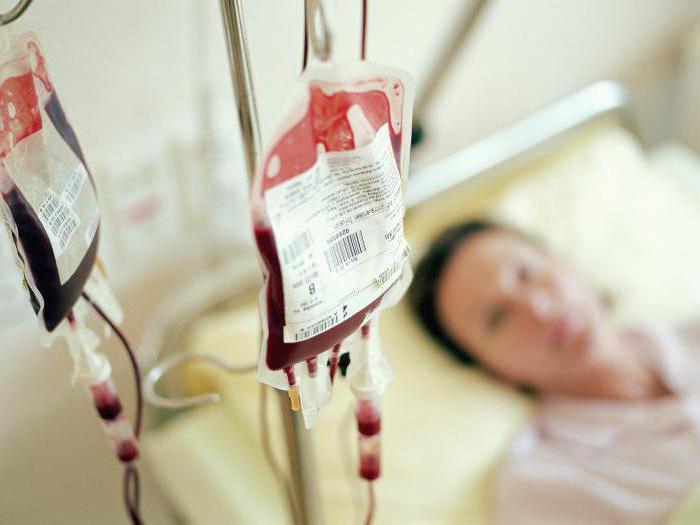
Fourth blood group
The fourth group has antigens of both types, but does not include antibodies. The owners of this group can only transfer part of their blood to the owners of the same type. It has already been said above that a person with blood group 0 (I) is a universal donor. What about the recipient (the patient who takes it)? Those who have the fourth blood type can take any, that is, they are universal. This is because they do not have antibodies.
Features of transfusion
If antigens of that group that are incompatible get into the human body, then foreign red blood cells will gradually stick together. This will lead to poor circulation. Oxygen in such a situation abruptly ceases to flow to the organs and all tissues. The blood in the body begins to clot. And if you do not start treatment on time, it will lead to quite serious consequences. That is why before committing the procedure, it is necessary to conduct tests for the compatibility of all factors.
In addition to the blood type, the Rh factor must be taken into account before transfusion. What's this? It is a protein found in red blood cells. If a person has a positive indicator, then he has an antigen D in his body. In writing, this is indicated as follows: Rh +. Accordingly, Rh- is used to mark negative Rh factor. As is already clear, this means the absence of group D antigens in the human body.
The difference between blood type and Rh factor is that the latter only plays a role during transfusion and during pregnancy. Often a mother with the D antigen is not able to bear a child who does not have it, and vice versa. 
The concept of universality
During a red blood cell transfusion, universal donors are people with a blood type of the first with Rh negative. Patients with the fourth type and the positive presence of antigen D are universal recipients.
Such statements are only suitable if a person needs to receive an A and B antigen reaction during a blood cell transfusion. Often such patients are sensitive to foreign cells. Rh positive. If a person has an HH system - the Bombay phenotype, then such a rule does not apply to him. Such people can receive blood from HH donors. This is due to the fact that in erythrocytes they have antibodies specifically against H.
Universal donors cannot be those who have A, B antigens or any other atypical elements. Their reactions tend to be taken into account infrequently. The reason is that during transfusion, a very small amount of plasma is sometimes transported, in which foreign particles are directly located. ![]()
Finally
In practice, most often a person is transfused with blood of the same group and the same Rh factor that he has. To universal variant resorted to only when the risk is really justified. Indeed, even in this case, an unforeseen complication may occur, which will entail cardiac arrest. If in stock necessary blood no, and there is no way to wait, then doctors use universal group.
Blood transfusion (hemotransfusion) is carried out according to clearly defined indications. Before carrying out this procedure, it is necessary to carry out a complex diagnostic studies, according to which compatibility is determined.
In this article, we will consider what a universal blood donor is.
Historical data
The transfusion technique began to be used several centuries ago, but, unfortunately, at that time, healers did not know that if a transfusion saves a life for one person, then it will be a deadly event for another. Therefore, a lot of sick people died. But there is such a thing as a universal donor. More on this later.
Only in 1900, the Austrian microbiologist K. Landsteiner found out that the blood of all people can be divided into A, B and C types. The outcome of the procedure will depend on this.
And already in 1940, the same scientist also discovered the Rh factor, so the ability to save the lives of the victims turned out to be an easily achievable goal.
However, in emergency situations, there may be a need for urgent transfusion, when there is absolutely no time to determine and search for blood that is suitable for the group and Rh factor.
What is the universal donor group?
Therefore, scientists wondered: is it possible to choose a universal group that could be injected into all patients who need it.
The universal blood group is the first. This is based on the fact that when interacting with other groups, flakes formed in some cases, while in others this did not happen. Flakes were formed as a result of erythrocytes sticking together. Under the influence this process, called agglutination, there was a fatal outcome. 
We will talk about the universal donor below.
Principles of dividing blood into groups
Each erythrocyte carries a set of genetically determined proteins on its surface. The blood group is determined by a complex of antigens, which, respectively, in different groups excellent. It is completely absent in representatives of the first blood group, therefore, when it is transfused to representatives of other blood groups, antigens do not cause a conflict in the donor's body and, as a result, the agglutination process does not occur.
In people with the second blood group, antigen A is determined, with the third group - antigen B, and with the fourth, respectively, a combination of antigens A and B.
The liquid component of the blood (its plasma) contains antibodies, the action of which is aimed at identifying foreign antigens. So, against antigen A, agglutinin a is determined, antigen B - in.
In the first group, both types of agglutinins are determined, with the second group - only in, with the third - a, with the fourth there are no antibodies.
This is the basis of the concept of the universal donor. 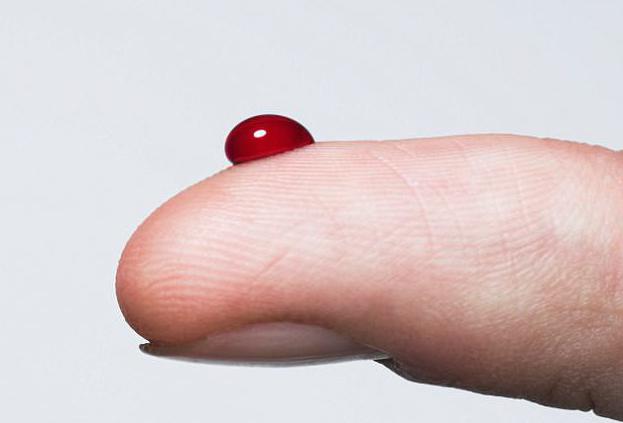
Compatibility
The result of the interaction of the components of one group with another determines compatibility. Incompatibility occurs during transfusion of donor blood, which contains an antigen or agglutinin of the same name to the recipient's own antigens or antibodies. This leads to adhesion of red blood cells, closing of the lumen of the vessel and slowing down the supply of oxygen to the tissues. Also, such clots "clog" the renal tissue with the development of acute renal failure, resulting in death. An identical situation can occur during pregnancy, when the mother develops antibodies to the blood antigens of the developing fetus.
It is important to remember that the blood type of a universal donor is the first or 0.
Definition of compatibility
It is necessary to mix the blood serum of a person who will receive a blood transfusion (recipient) with a drop of donor blood and evaluate the result after 3-5 minutes. If flakes form from sticky erythrocyte clots, then they talk about the impossibility of transfusing such blood, that is, about incompatibility.
If no changes have occurred, then such blood can be infused into the patient, but in limited quantities.
To determine the Rh factor, a drop is added to a drop of blood. chemical drug which carries out the reaction. The result is evaluated in the same way as in the previous method. 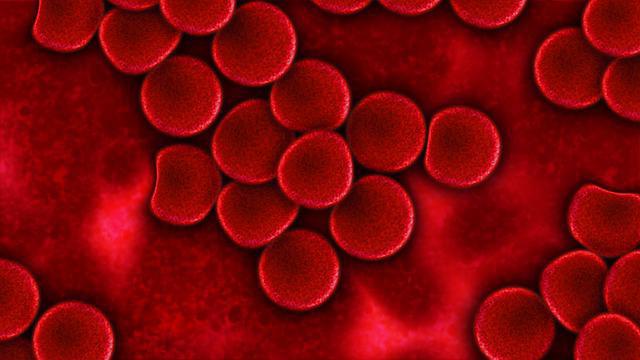
In the presence of indications and suitable donor blood, a so-called biological test is first carried out. Its essence lies in the fact that at first approximately 15 milliliters of blood is infused and the patient's reaction is observed. This is done at least three times, after which the remainder is poured.
If, during such a biological test, the patient complains of a tingling sensation at the injection site, pain in the lumbar region, a feeling of rapidly developing heat, increased heart rate, then the injection should be stopped immediately, even if it is the blood of a universal donor.
Hemolytic disease of the newborn
Occurs as a result of incompatibility of the blood of the mother and child, while the body of the fetus is recognized as foreign, foreign body containing antigens, so antibodies are formed in the body of a pregnant woman.
When they interact, the blood coagulates, pathologically unfavorable processes develop in the body of the developing fetus.
There are 3 forms hemolytic disease:
- Edema.
- Icteric.
- Anemic.
The most easily occurring is the anemic form, in which the level of hemoglobin and red blood cells decreases.
Symptoms of jaundice immediately after birth - hallmark icteric form of hemolytic disease of the newborn. This form tends to rapidly increase in symptoms, with discoloration skin to a yellow-green tint. Such children are lethargic, do not suckle their breasts well, they, in addition, have a tendency to bleed. The duration of this form is from one to three or more weeks. In the absence of properly selected timely treatment, as a rule, the development of severe neurological complications is observed. 
Predisposing factors for the development of this pathology in children are:
- Pathological changes in the placenta.
- Repeated frequent pregnancies with small intervals.
Blood type is a sign of a person, it is genetically determined and accompanies a person throughout his life. Therefore, neglect of knowledge about its basic properties is fraught with the development of serious consequences.
We found out what kind of blood is a universal donor.



